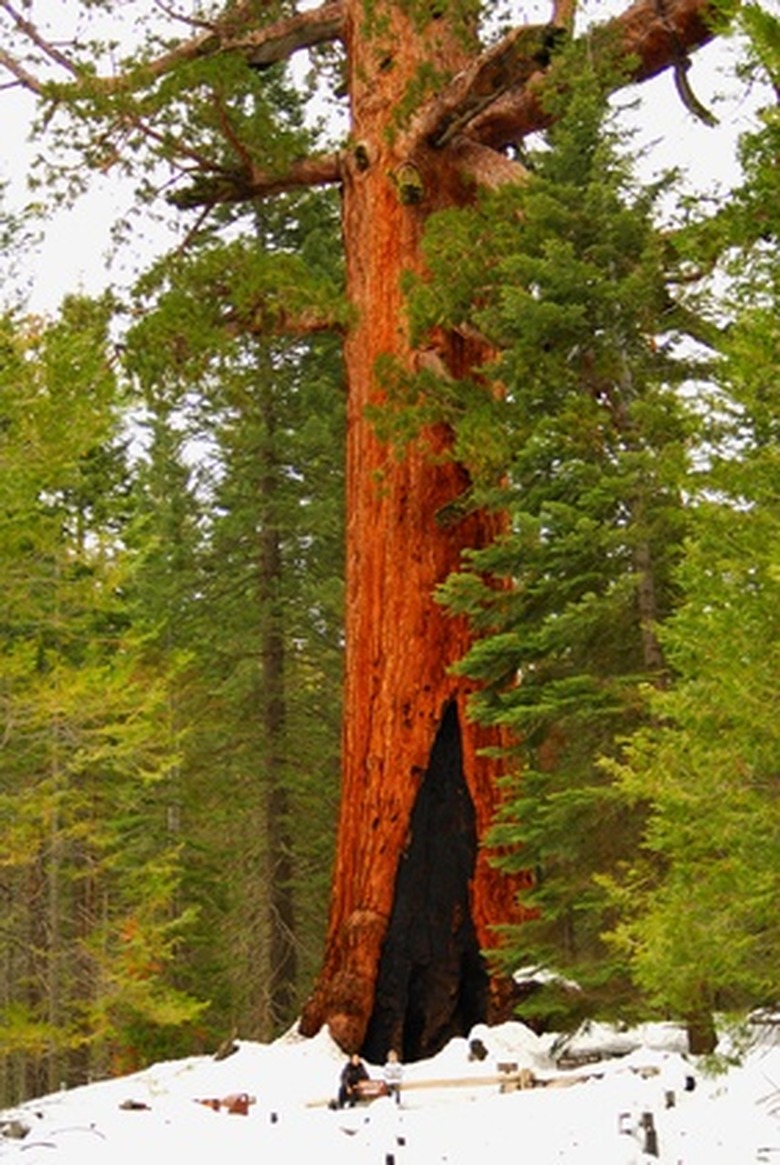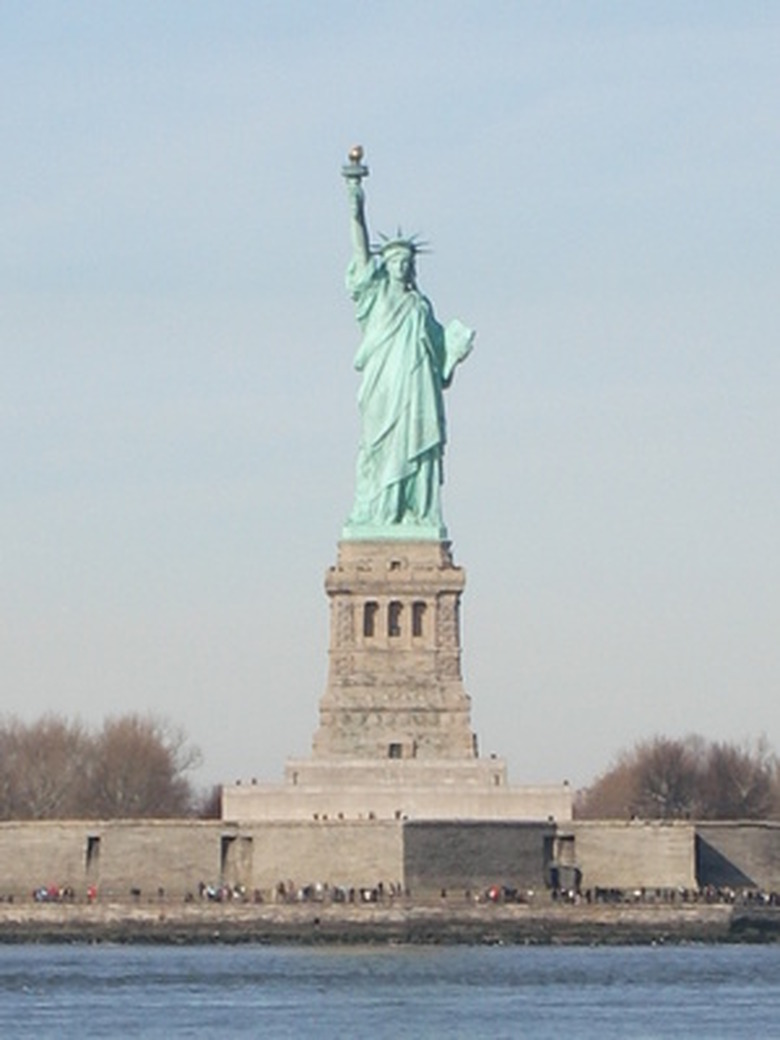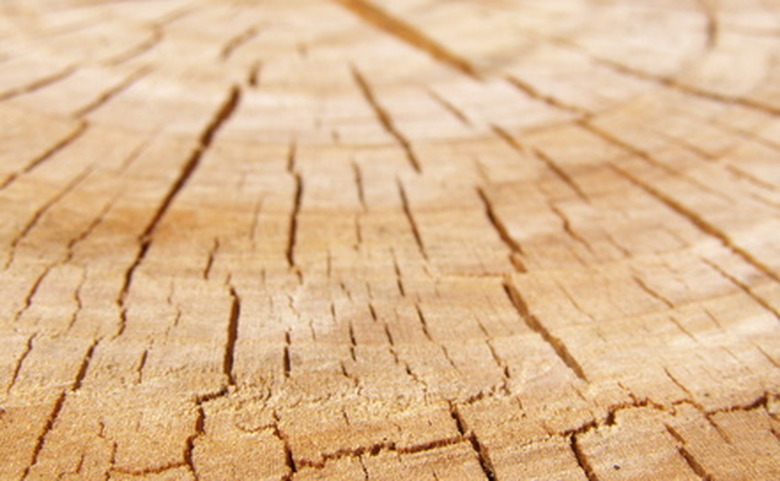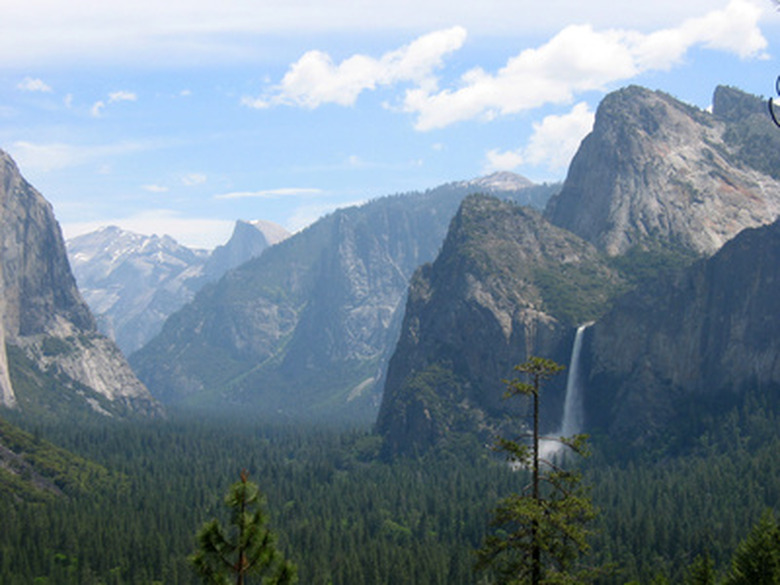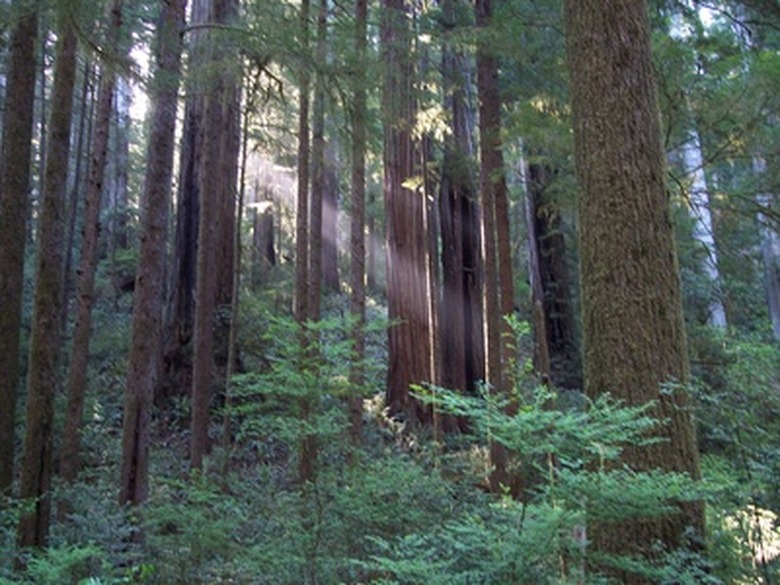The Differences Between Redwoods & Sequoia Trees
Botanists once shoehorned the sky-scraping coastal redwoods and the hulking giant sequoias into the same taxonomic family. The trees do share obvious characteristics; both are evergreen, grow in a similar range and reach awe-inspiring sizes. However, coastal redwoods and giant sequoias are quite different, even down to their genes–coastal redwoods have six sets of chromosomes to the giant sequoia's two.
Size
Coastal redwoods are the tallest trees, but giant sequoias are the most massive. The tallest coastal redwood is 378 feet tall, according to the Sequoia National Park website. The largest giant sequoia grows to 310 feet tall but has a base diameter of 35 feet. The taller coastal redwood has a diameter of only 22 feet, giving the "largest by volume'" title to the giant sequoia. The trunk of General Sherman, a giant sequoia in King's Canyon National park, weighs nearly 1,400 tons–as much as 15 blue whales.
- Botanists once shoehorned the sky-scraping coastal redwoods and the hulking giant sequoias into the same taxonomic family.
- The taller coastal redwood has a diameter of only 22 feet, giving the "largest by volume'" title to the giant sequoia.
Growth Habit
Although both coastal redwoods and giant sequoias reproduce by seed, coastal redwoods have the secondary ability to reproduce through sprouts. As they mature, the bark of a giant sequoia can grow 36 inches thick in comparison to the coastal redwood's 12 inches, and the oldest giant sequoia was nearly 3,200 years old. The oldest coastal redwood is roughly 1,000 years younger. Coastal redwoods require humid and cool conditions to grow. Giant sequoias can withstand heat and moderately dry conditions.
Location
Coastal redwoods, as the name implies, prefer low, temperate altitudes. They grow from sea level to 3,600 feet, in in humid and cooler regions along the California coast up into British Columbia. Giant sequoias are happier inland and grow along the western face of the Sierra Nevada mountains, at altitudes from 4,800 feet to 8,200 feet between Placer and Tulare counties. Many of the largest are protected in King's Canyon National Park, Yosemite National Park and Sequoia National Park.
- Although both coastal redwoods and giant sequoias reproduce by seed, coastal redwoods have the secondary ability to reproduce through sprouts.
- Giant sequoias are happier inland and grow along the western face of the Sierra Nevada mountains, at altitudes from 4,800 feet to 8,200 feet between Placer and Tulare counties.
Physical Characteristics
These two giants share the same cinnamon-colored, vertically-lined bark and red, tannin-laced heartwood. However, the needles of the coastal redwood are softer, flat and arranged along either side of the center stem, similar in structure to a feather. Giant sequoias, on the other hand, have scaled leaves held in sprays. The giant sequoia's foliage is prickly and better able to withstand heat and dry conditions. Both species have surprisingly small seeds, with the slightly larger giant sequoia seed having the shape of a rolled oat and stored in an egg-shaped cone. The coastal redwood has an even smaller seed, similar in size to a tomato seed, and the cone is the size of an olive.
References
- "Sunset Western Garden Book"; Kathleen N. Brenzel, ed.; 1995
- Palomar College: Wayne's Word: The Taxodium Family
- Nature Alley: Sequoia vs. Redwood Trees
